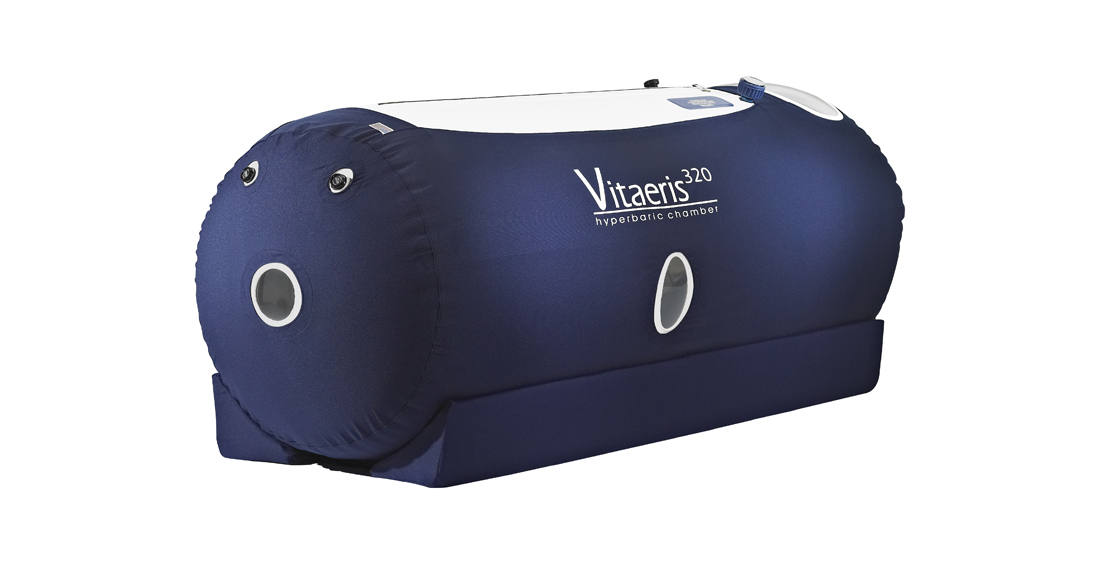Mild-Hyperbaric Oxygen Therapy (M-HBOT)
Services / Mild-Hyperbaric Oxygen Therapy (M-HBOT)
The tissues in our body need oxygen to regenerate, thrive, survive, and heal. With an increased exposure to oxygen that can saturate the needs of our body, M-HBOT can help promote healing at an increased rate.

M-HBOT uses pressures below 1.5 ATA, typically around 1.3 ATA to deliver mild hyperbaric therapy. The advantage to using lower pressures is that they can still deliver very high oxygen levels into the body but with an impeccable safety record.
M-HBOT was found to have positive effects in:
- Inflammation- reduced at multiple levels of the body as found in cancer, Alzheimer Disease, neurological disease such as multiple sclerosis (MS), mild traumatic brain injury, post-concussion syndrome, anxiety and depression, arthritis, fibromyalgia, diabetes, cardiovascular and autoimmune disease.
- Athletic performance- enhanced athletic performance and recovery and faster recovery from injuries.
- Cancer- making conventional treatment more efficient and reducing toxicity of chemo and radiation.
- Diabetes- improved blood glucose levels and insulin resistance
- Stroke- helping in stroke prevention and recovery
- Anti-aging- effects on cardiovascular system, brain, joints, eyes, energy level, immunity, and skin
- Recovery after surgeries- faster healing
There are not many conditions that couldn’t be improved with this therapy that is safe and effective!
How does hyperbaric therapy work?
Hyperbaric therapy is a technology in which the air pressure in the environment is increased. When a person’s body is placed in a higher pressure environment, it absorbs more oxygen molecules per volume of compressed air. The body normally transports oxygen via the hemoglobin of the red blood cells. By increasing the air pressure, oxygen is then driven into the body’s fluids, allowing a super-saturation of tissues and organs with oxygen. The increased pressure infuses the body with oxygen, even reaching injuries with damaged circulation. An example of this is a blood clot in the brain (stroke).
What is Hyperbaric therapy used for?

Stroke, diabetic foot wounds, air and gas embolism, carbon monoxide poisoning and smoke inhalation, gas gangrene, decompression sickness, acute mountain sickness, cerebral palsy, brain injuries, near-drowning, thermal burns, anemia, brown recluse spider bites, wound healing, crush injuries, bone grafts, etc.
How many treatments are needed?
Each case is different and the doctors may regulate protocols, depending on a patient’s disease, prognosis and improvements through the course of therapy.
Is Hyperbaric therapy safe?
Hyperbaric therapy has a very good safety record. Mild otic discomfort similar to the ear pressure felt when ascending or descending in altitude. These discomforts may be minimized by descending at a slower rate.
Is Hyperbaric therapy good for the elderly?
Hyperbaric therapy is great for those in their later years since it provides an immeasurable boost which counteracts the signs of aging. In fact, new research indicates that hyperbaric oxygenation slows apoptosis (cell death).
What if I'm healthy but want to do hyperbaric therapy for fitness and wellness?
Mild hyperbaric therapy is used regularly by people from all walks of life, including professional athletes and mountain climbers. As a competitive edge for athletes, hyperbaric oxygenation reduces muscle fatigue and the build-up of lactic acid. Members who use hyperbaric therapy in their professional athletic careers report an advantage over competitors.
People who live at high altitudes should have access to a hyperbaric chamber at any given time. Because at higher altitudes, a given volume of air contains less oxygen than at sea level or below, a hyperbaric chamber can increase oxygen levels in the body and alleviate ailments induced by hypoxia and acute mountain sickness.
Why does LeBron James Admire OxyHealth Chambers?
Basketball lovers might be curious to know how does LeBron Raymone James manage to keep his performance outstanding most of the time. He has two Olympic gold medals, three NBA Championships, the NBA Rookie award, four NBA best player awards, and an NBA scoring title in his possession. As per the latest buzz, OxyHealth chambers are key to fitness.
HBOT and Cognitive Effects After Surgery
With two applications of Hyperbaric Oxygen Therapy before and post-surgery, cognitive defects may be reduced by 30%. This is especially important in diabetics, aged, and individuals with know underlying atherosclerotic disease, and where lengthy surgery with or without significant blood loss occurs. This is also noted in patients undergoing coronary bypass surgery. One of the underlying mechanisms is reduction in white blood cells and reduction in re-perfusion injury, thereby decreasing post-operative inflammation.
HBOT for Autoimmune Disorders
The most basic description of an Autoimmune Disorder is simply, a dysfunction of the immune system. However, this disorder can be very complicated and includes many different health conditions such as; Lupus, Crohn’s Disease, Rheumatoid Arthritis, Ulcerative Colitis, Idiopathic Thrombocytopenia (ITP), and Scleroderma. The specific cause of the various diseases is not clearly known, however, harmful inflammatory substances are found in patients with this type of dysfunction. There is approximately a 70% association with multiple chronic infections, which include bacterial, viral, and fungal.
Trial: Hyperbaric oxygen treatment of chronic refractory radiation proctitis
Cancer patients who undergo radiotherapy remain at life-long risk of radiation-induced injury to normal tissues. We conducted a randomized, controlled, double-blind crossover trial with long-term follow-up to evaluate the effectiveness of hyperbaric oxygen for refractory radiation proctitis.
Hyperbaric Oxygen Therapy and Cancer - A Review
Hypoxia is a critical hallmark of solid tumors and involves enhanced cell survival, angiogenesis, glycolytic metabolism, and metastasis. Hyperbaric oxygen (HBO) treatment has for centuries been used to improve or cure disorders involving hypoxia and ischemia, by enhancing the amount of dissolved oxygen in the plasma and thereby increasing O2 delivery to the tissue. Studies on HBO and cancer have up to recently focused on whether enhanced oxygen acts as a cancer promoter or not. As oxygen is believed to be required for all the major processes of wound healing, one feared that the effects of HBO would be applicable to cancer tissue as well and promote cancer growth. Furthermore, one also feared that exposing patients who had been treated for cancer, to HBO, would lead to recurrence. Nevertheless, two systematic reviews on HBO and cancer have concluded that the use of HBO in patients with malignancies is considered safe.
